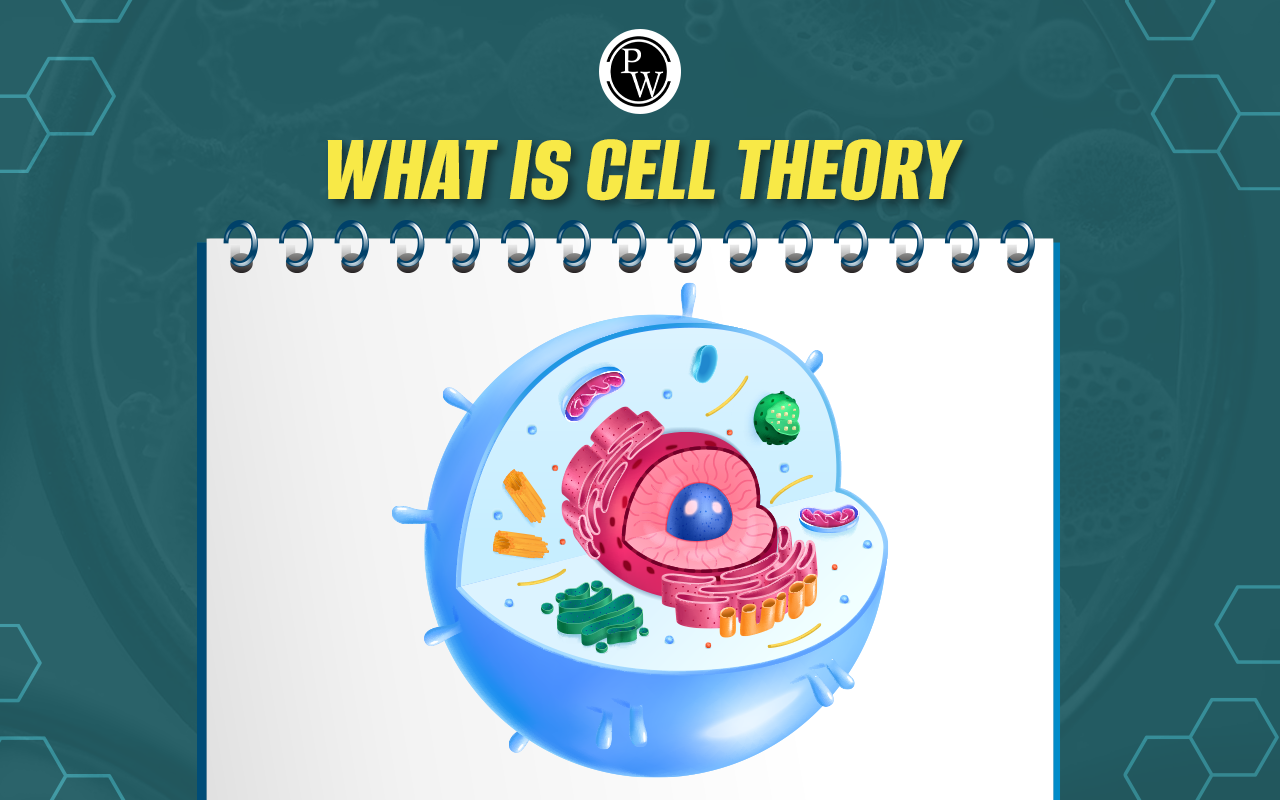
Histology MCQ Introduction
Histology MCQ: The study of histology allows insight into the structure and function of tissues at the microscopic level. This discipline provides a unique perspective on how cells come together to form different organs throughout the body. The characteristics of different cell types, such as size, shape, and staining properties, can be determined by examining tissue samples under a microscope. They can even explore cellular processes in detail through advanced techniques like immunohistochemistry, histochemistry, and electron microscopy.
Histology is essential in medical diagnostics as it allows pathologists to diagnose diseases by identifying irregularities or abnormalities in tissue samples obtained through biopsies or surgeries. Furthermore, histological research has contributed significantly to our understanding of various conditions ranging from cancer biology to neurological disorders. In short, Histology enables us to appreciate the complexity of living organisms at a cellular level while providing invaluable insights into human health and disease management strategies.| NEET 2024 Exam Important Links | |
|---|---|
| NEET 2024 Syllabus | NEET Biology Notes |
| NEET 2024 Eligibility Criteria | NEET Exam Pattern |
| NEET Previous Year Question Papers | NEET Admit Card |
Q 1. Where are collateral vascular bundles found?
- Malvaceae
- Gramineae
- Cucurbitaceae
- Leguminosae
Answer- b, Gramineae
Explanation: Bicollateral vascular bundles are found in the Gramineae family, also known as Poaceae. The Gramineae family includes grasses like wheat, rice, corn, and bamboo. Bicollateral vascular bundles have two separate and parallel phloem strands, one located on the inner side of the xylem and another on the outer side. This arrangement is characteristic of the vascular bundles in grasses.
Q 2. In monocotyledons, why is grafting not possible?
- Because they have scattered vascular bundles
- Because they lack cambium
- Because they are herbaceous
- Because they have parallel bundles
Answer- b, Because they lack cambium
Explanation: This layer is essential for grafting as it allows the two plants to fuse together and exchange nutrients and water through their vascular bundles. Monocotyledons instead have scattered vascular bundles, which make grafting unsuccessful.
Q 3. An example of vascular cambium is ________
- Lateral meristem
- Primary meristem
- secondary meristem
- Intercalary Meristem
Answer- a, Lateral Meristem
Explanation: The vascular cambium is a lateral meristem found in the stems and roots of woody dicotyledonous plants. Meristems are regions of actively dividing cells that contribute to the growth and development of plants.
The vascular cambium is responsible for the secondary growth in plants, which leads to an increase in the girth or thickness of the stems and roots. It produces secondary xylem (wood) towards the inside and secondary phloem (inner bark) towards the outside, contributing to annual growth rings in tree trunks.Q 4. Which one of the following vitamins can be synthesized by bacteria inside the gut?
- B
- D
- C
- Both B and C
Answer- b. Vitamin D
Explanation: Bacteria inside the gut can synthesize vitamin D. The fat-soluble vitamin D regulates calcium and phosphate metabolism and bone health. As well as dietary sources such as fatty fish and fortified dairy products, sunlight can also synthesize it in the body.
When sunlight hits the skin, a form of cholesterol called 7-dehydrocholesterol is converted into vitamin D3 (cholecalciferol). However, it is worth noting that the synthesis of vitamin D3 in the skin requires exposure to UVB radiation, which may vary depending on factors like geographic location, time of year, and skin pigmentation. In addition to sunlight exposure, certain bacteria in the gut can also produce vitamin D. These bacteria possess the enzymatic machinery necessary to convert precursor compounds into the active form of vitamin D. However, the amount of vitamin D synthesized by gut bacteria is generally considered to be relatively small compared to the amount obtained through sunlight exposure or dietary intake.Q 5. Muscularis layer of the wall of the alimentary canal is formed by:-
- Smooth muscle arranged into an inner longitudinal and an outer circular layer
- Smooth muscle is placed into an outer circular and an outer longitudinal layer
- Skeletal muscle arranged into an inner longitudinal and an outer circular layer
- Skeletal muscle arranged into an inner circular and an outer longitudinal layer
Answer- d, Smooth muscle arranged into an inner circular and an outer longitudinal layer
Explanation: The muscularis layer of the alimentary canal wall is composed of smooth muscle arranged into an inner circular layer and an outer longitudinal layer. The muscles contract to aid in the propulsion of food, liquid, or air along the digestive tract. This arrangement allows for more efficient movement of materials through the digestive system.
Q 6. Which of the following guards the opening of the hepatopancreatic duct into the duodenum?
- ileocaecal valve
- Pyloric sphincter
- Sphincter of Oddi
- Semilunar valve
Answer- c, Sphincter of Oddi.
Explanation: This sphincter guards the opening of the hepatopancreatic duct into the duodenum and helps to regulate the flow of bile and pancreatic juices from these organs into the small intestine.

Q 7. Which of the following statements should be corrected?
- Pepsinogen is secreted by Brunner's glands in the submucosa of the stomach.
- Goblet cells are present in the intestinal lining and secrete mucus.
- Oxidative cells are present in the gastric mucosa and secrete HCl. Acini are located in the pancreas and secrete carboxyl groups.
- None of the above
Answer- a, Pepsinogen is secreted by Brunner's glands in the submucosa of the stomach.
Explanation: Rather than being in the stomach, runners' glands are located in the submucosa of the duodenum. These glands produce alkaline mucus that neutralizes stomach acid and protects the duodenum's lining. Unlike the chief cells in the stomach's gastric glands, they do not secrete pepsinogen.
Q 8. The activity of _________heals wounds in plants.
- Apical meristem
- Intercalary meristem
- Lateral meristem
- secondary meristem
Answer- d, Secondary meristem.
Explanation: Secondary meristems are responsible for healing wounds in plants. They form a callus that eventually fills the damage and helps to recover it. The secondary meristem, or cork cambium, produces layers of protective cells known as the periderm. It provides protection and prevents further damage to the plant.
Q 9. Where do we find the Casparian strips?
- Endodermis
- Hypodermis
- pericycle
- collenchyma
Answer- a, Endodermis
Explanation: The Casparian strips are found in the endodermis, one of the layers of cells inside a plant's root. The Casparian strip helps to regulate the movement of water and minerals through the plant by preventing their diffusion through cell walls.
Q 10. Brunner's gland is the characteristic feature of:-
- jejunum of the small intestine
- ileum
- duodenum
- fundic region of the stomach
Answer- c, duodenum
Explanation: Brunner's glands are characteristic features of the duodenum, the first part of the small intestine. These glands are located in the submucosa layer of the duodenum and secrete alkaline mucus. The alkaline mucus helps neutralize the acidic chyme coming from the stomach, creating a more favorable environment for the activity of digestive enzymes in the small intestine.
The presence of Brunner's glands in the duodenum is one of the distinguishing features of this small intestine region. They are not found in the stomach's jejunum, ileum, or fundic region.Q 11. Mucosa- what does not hold?
- Lines the lumen of the alimentary canal
- Rugae in stomach
- Villi in the small intestine
- The intestine's villi give it a brush border appearance
Answer- d, The intestine's villi give it a brush border appearance
Explanation: Although rugae are found in the stomach, and villi give the intestine a brush border appearance, villi are not found in the small intestine. Villi are only present in the large intestine.
Q 12. Which is not associated with Mucosa?
- Villi, microvilli, goblet cells
- Gastric glands, intestinal crypts,
- Lacteal, villi, and microvilli
- Lacteal, duodenal glands
Answer- b, Lacteal, duodenal glands.
Explanation: Lacteals are associated with the mucosa of the small intestine, specifically with the villi. Small intestinal villi contain lymphatic vessels called lacteals. They are responsible for the absorption of dietary fats and fat-soluble vitamins.
Duodenal glands, on the other hand, are not directly associated with the mucosa. Duodenal glands, also known as Brunner's glands, are located in the submucosa of the duodenum. They secrete alkaline mucus to help neutralize the acidic chyme coming from the stomach.Q 13. Identify the correct statement concerning the human digestive system
- The serosa is the innermost layer of the alimentary canal.
- the ileum is a highly coiled part
- The vermiform appendix arises from the duodenum.
- ileum opens into the small intestine.
Answer- b, The Ileum is a highly coiled part.
Explanation: The ileum is a highly coiled and most extended part of the small intestine. It follows the jejunum and is responsible for absorbing nutrients, such as bile salts, vitamin B12, and any remaining nutrients not absorbed in the jejunum.
The other statements are incorrect:- Serosa is not the innermost layer of the alimentary canal. The innermost layer is the mucosa, followed by the submucosa, muscularis externa, and the serosa, the outermost layer.
- The vermiform appendix arises from the cecum, the first part of the large intestine, not the duodenum.
- The ileum does not open into the small intestine. Instead, it connects to the large intestine at the cecum.

Q 14. Examples of phloem fibers include
- Flax
- Hemp
- Jute
- All of the above
Answer- d, All of the above
Flax, Hemp, and Jute are all examples of phloem fibers. The phloem is the plant tissue that transports nutrients and sugars from leaves to other parts of the plant. Fibers are long cells that do not break down and provide strength within the plant's tissue.Q 15. The muscularis layer in the wall of the GIT has
- Smooth muscle is divided into an inner circular layer and an outer longitudinal layer
- Smooth muscle is divided into an outer circular layer and an inner longitudinal layer
- Skeletal muscle is divided into an inner circular layer and an outer longitudinal layer
- Skeletal muscle is divided into an outer circular layer and an inner longitudinal layer
Answer- a, smooth muscle organized into an inner circular and an outer longitudinal layer.
Explanation: The muscularis layer in the wall of the GIT typically has smooth muscles organized into an inner circular and an outer longitudinal layer. This arrangement allows for the contractions of the GIT wall that are necessary for material moving through it.
NEET Online Coaching by PW can help you learn from the best educators, access quality study material, and practice with mock tests and assessments. PW's NEET online coaching can help you achieve your dream of becoming a doctor. Join and book your seat now.Check More Important NEET Biology MCQ
Histology MCQ FAQs
What is the role of histology in medicine?
Why is histology important in MBBS?
Is histology important for a doctor?
What is the difference between histology and pathology?
What are the four types of histology?










